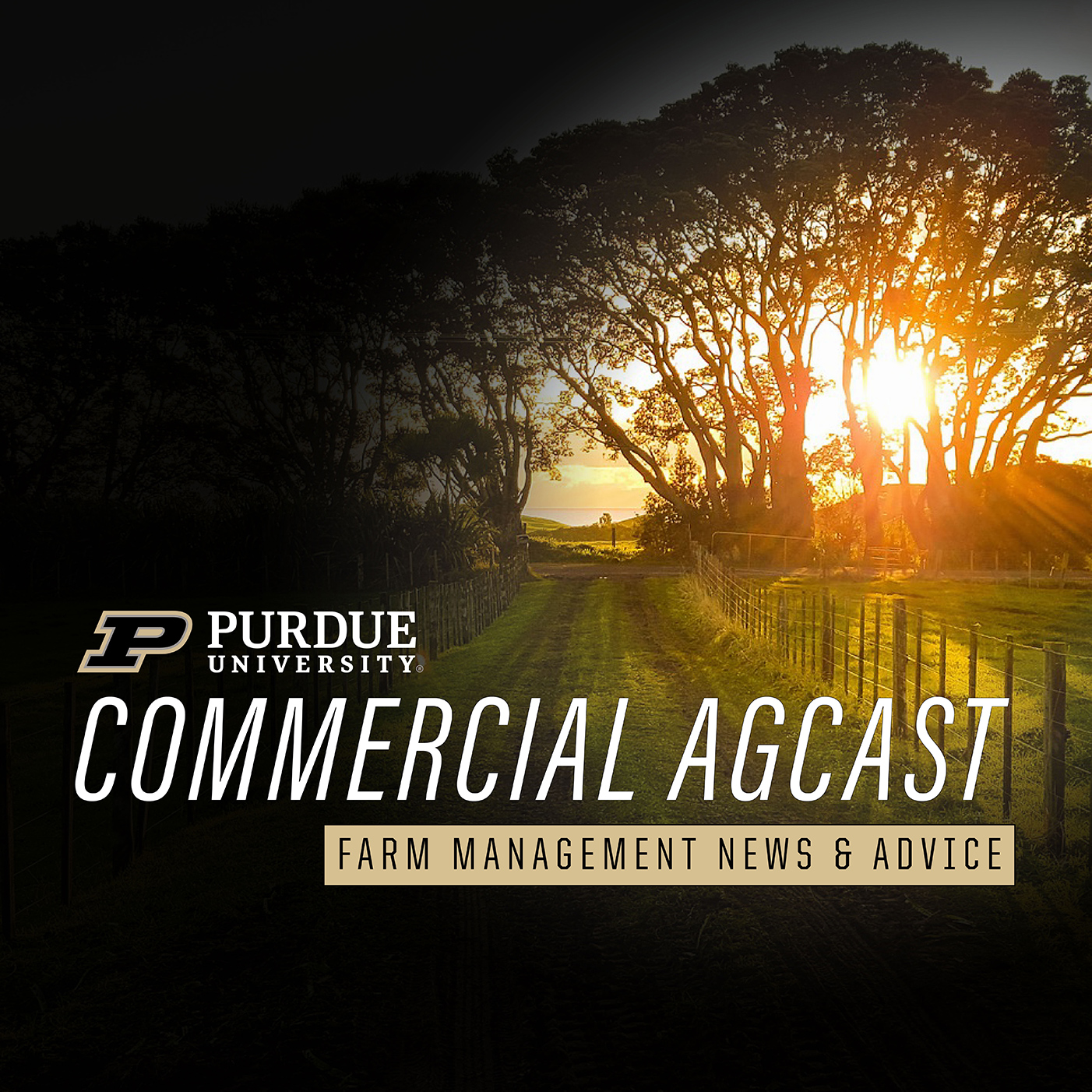May 7, 2024
Farmer sentiment declines to lowest level since June 2022 amid weakened financial outlook
Farmer sentiment declined sharply in April, as indicated by the Purdue University/CME Group Ag Economy Barometer, which fell 15 points from March to a reading of 99. Both subindexes of the barometer also declined: The Current Condition Index dropped by 18 points to 83, while the Future Expectations Index fell by 14 points to 106. April marked the lowest farmer sentiment reading since June 2022 and was just 3 points better than in April 2020. This April’s current condition rating was its weakest since May 2020. The sentiment decline was driven by worries regarding the current financial situation on producers’ farms and anticipated financial challenges in the coming year. The April Ag Economy Barometer survey was conducted from April 8-12, 2024.
The Ag Economy Barometer sentiment index is calculated each month from 400 U.S. agricultural producers’ responses to a telephone survey. Purdue ag economists James Mintert shares some insight into the results of the April 2024 Ag Economy Barometer survey on this Purdue Commercial AgCast episode.
The full report is available at https://purdue.ag/agbarometer. The audio transcription is available below.
Audio Transcript
James Mintert: Welcome to Purdue Commercial AgCast, the Purdue University Center for Commercial Agriculture’s podcast featuring farm management news and information. I’m Jim Mintert, director of the Purdue Center for Commercial Agriculture, and I’m going to share with you the highlights of this month’s Ag Economy Barometer Survey.
The Ag Economy Barometer Index dropped hard this month from a reading of 114 to a reading of 99, so it’s down 15 points compared to a month ago, and that leaves the index 24 points below where it was this time last year. The Index of Current Conditions and the Index of Future Expectations both fell pretty hard as well this month.
Current conditions fell 18 points compared to last month and down 46 points compared to April of 2023. And the future expectation index was down 14 points, both compared to last month and compared to a year ago. So, if you think about it in terms of why sentiment dropped, people became less optimistic about what was taking place on their farms today. And they’re also starting to show some evidence of being some concerns about where we’re headed here over the course of the next year.
And that was really reflected in the Farm Financial Performance Index this month. That’s the index reading of 83 was down seven points compared to a month ago. But keep in mind that index has been drifting lower really since the end of last year, and now that index is 17 points lower than it was this time last year. So producers are increasingly showing concerns about their financial situation as they look at what’s taking place here in 2024, and I think a lot of that obviously is related to the weakness we’ve seen in crop prices.
The Farm Capital Investment Index also fell this month. It was down 10 points compared to a month ago, and that leaves that index down 12 points compared to a year ago. That index reading of 31 is one of the lowest readings. We’ve gotten this low before, but it’s only been this low a couple of times. So it’s one of the weakest Capital Investment Indexes we’ve received. And again, I think it ties back to the farm financial performance weakness and the expectations for 2024 being a tough year for a lot of folks, especially crop producers.
The Short Term Farmland Value Expectation Index, after rising last month, actually took a dip this month. It dropped 12 points. This month’s reading was 112, down from 124 last month. And if you think about what was taking place there, um, last month might have been just a little bit of an anomaly with respect to what that index has been doing. That index, except for last month, has been drifting lower since late last year. And so this month might just be kind of a little bit of resumption of that, but clearly producers are less optimistic about where farmland values are headed over the next 12 months than they were. For example, this time last year, the index was at a reading of 123. Two years ago, the index was at a reading of 144 and three years ago that index was at a reading of 159. So our survey says that we’re still getting more people saying that they expect to see farmland values rise over the next 12 months than expect to see it fall, which is why the index is still positive in the sense that it’s above 100, but clearly less optimism than what we saw before.
And you can see that when you look at the raw responses to the question, not the index itself. This month, 17 percent of the people in the survey said that they actually expect to see farmland values weaken or decline over the next 12 months. I think the second highest reading we’ve gotten on that over the last roughly three or three and a half years. And only 29 percent of the producers in the survey said they expect to see farmland values rise over the course of the next 12 months. To put both of those numbers in, in, uh, perspective, a year ago, 14 percent of the producers in the survey said they thought farmland values might weaken over the next 12 months. And 37 percent said they thought farmland values were headed higher. So you could kind of see what’s taking place there, that erosion of confidence with respect to farmland values.
One of the things that we’ve been tracking in the Ag Economy Barometer survey, going back to June of 2021, is the activity that’s been taking place with respect to leasing farmland for the installation of a solar energy project. The first time we asked this question was in June of ’21, and the question was phrased along these lines, it said, have you actively engaged in discussions with any companies about leasing farmland you own for the installation of a solar energy project to generate electricity. In June of 2021, just 9 percent of the producers in the survey said that they’d had a discussion with a company about solar energy leasing. That’s drifted upwards over time. You go back this time last year in, in April of ’23, I think 15 percent of the producers in the survey said they’d had a discussion. And then here this winter, we actually changed the question a little bit. The last couple of times we’ve asked the question, we’ve asked people to focus on activity that had taken place in the last six months.
And so, in February, I think that was a 10 percent response, indicating they’d had a discussion. In March, it was up a little bit to 12%. And this month, it actually jumped to 19%. So, almost one out of five producers in the survey said they’d had a discussion with a company about leasing farmland for solar energy in the last six months. That’s a significant jump, and it’s going to be interesting to see on future surveys if that holds up or if that response rate this month was a bit of an anomaly.
And then we did the follow up question, which is to ask people, what is the annual payment rate per acre that they were offered to lease some of their farmland for the installation of a solar energy project to generate electricity. And again, starting earlier this year, and starting with the March survey, we only posed this question to those who said they had engaged in a discussion with companies in the last six months. And we made a change to the response categories. So when people respond to this question, they are allowed to choose from several possible responses, and those responses are less than 500 an acre; 500 to 750 an acre; 750 up to 1,000; and then 1,000 or more. The last two times we I’m going to ask this question, though. We broke that 1, 000 or more into two subcategories, which are 1,000 up to 1,250, and then a 1,250 or more category. And that’s really probably what’s most interesting in terms of the responses. These last two surveys, we’ve picked up quite a few people reporting lease rates of over 1,000. I think in the most recent survey here in April, it was 58 percent of the people saying they were offered over 1,000 an acre. 30 percent of the people in the survey said that they were offered a rate of 1,000 up to 1,250. And 28 percent said they were offered 1,250 or more. And so if you look at the data, if you look at our surveys going back to 2021, it’s pretty clear that the lease rates for solar energy production are rising over time, not uniformly in the sense that we still get, for example, this month, 16 percent of the people in the survey said they were offered a rate of less than 500, 12 percent said they were offered 500 to 750, but it’s clear the upper end is moving up. And we suspect some of that’s geographically related. We suspect, although our survey isn’t large enough to really discern this, but we suspect that, uh, those higher lease rates are probably in areas where farmland lease rates are higher, for example, in the Corn Belt. And then obviously in some areas where the demand for solar energy, for whatever reason, is higher than in some other locales.
So that wraps up the highlights for this month’s survey. You can get the full report at our website, purdue.edu/agbarometer and on that website you can get a complete look not only at the report itself, but all the charts that we have generated associated with the barometer and you can look through those individually at your leisure.
So on behalf of the Center for Commercial Agriculture, thanks for joining us. I’m Jim Mintert.
TAGS:
TEAM LINKS:
RELATED RESOURCES
UPCOMING EVENTS
We are taking a short break, but please plan to join us at one of our future programs that is a little farther in the future.





